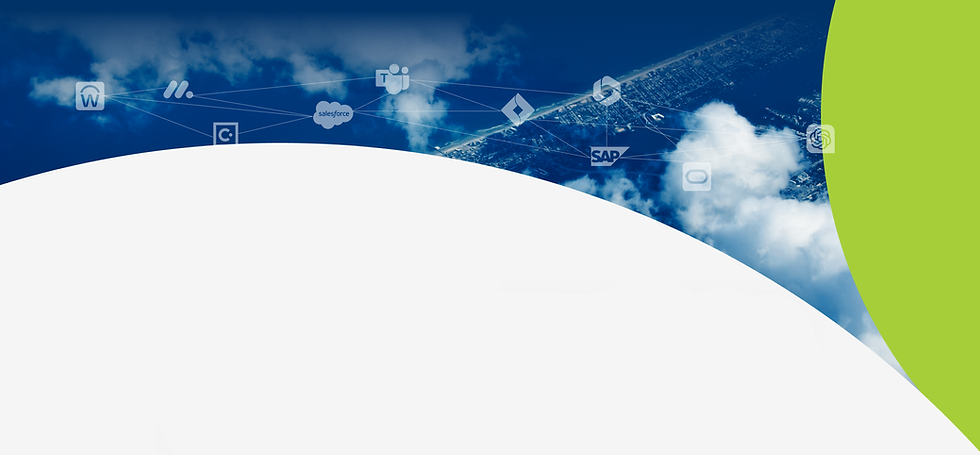


Malcom Sargla
Short bio about author here Lorem ipsum dolor sit amet consectetur. Vitae donec tincidunt elementum quam laoreet duis sit enim. Duis mattis velit sit leo diam.
Tags
Share this article
9/6/23
Published
Enterprises are embracing cloud platforms to drive innovation, enhance operational efficiency, and gain a competitive edge. Cloud services provided by industry giants like Google Cloud Platform (GCP), Azure, AWS, IBM, and Oracle offer scalability, flexibility, and cost-effectiveness that make them an attractive choice for businesses. One of the significant trends in cloud-native application development is the adoption of containerized applications, serverless architectures, and microservices. While these innovations bring numerous benefits, they also introduce unique security risks and vulnerabilities that organizations must address to ensure the safety of their cloud-native environments.
The Evolution of Cloud-Native Applications
Traditionally, organizations relied on on-premises data centers and a set of established security measures to protect their critical applications and data. However, the shift to cloud-native applications necessitates a reevaluation of security practices and a deeper understanding of the challenges involved.
Containers: A New Paradigm
Containers have emerged as a game-changer in the world of cloud-native development. They offer a way to package applications and their dependencies, ensuring consistency and portability across different environments. Developers appreciate containers for their ease of use and rapid deployment capabilities, but this transition comes with security implications that must not be overlooked.
One of the primary concerns with containers is the need for continuous scanning and vulnerability assessment. Developers may inadvertently include libraries with known vulnerabilities, putting the entire application at risk. To address this, organizations should leverage container scanning tools that assess images for vulnerabilities before they enter production. Tools like Prevasio’s patented network sandbox provide real-time scanning for malware and known Common Vulnerabilities and Exposures (CVEs), ensuring that container images are free from threats.
Continuous Container Monitoring
The dynamic nature of containerized applications requires continuous monitoring to ensure their health and security. In multi-cloud environments, it’s crucial to have a unified monitoring solution that covers all services consistently. Blind spots must be eliminated to gain full control over the cloud deployment.
Tools like Prevasio offer comprehensive scanning of asset classes in popular cloud providers such as Amazon AWS, Microsoft Azure, and Google GCP. This includes Lambda functions, S3 buckets, Azure VMs, and more. Continuous monitoring helps organizations detect anomalies and potential security breaches early, allowing for swift remediation.
Intelligent and Automated Policy Management
As organizations scale their cloud-native environments and embrace the agility that developers demand, policy management becomes a critical aspect of security. It’s not enough to have static policies; they must be intelligent and adaptable to evolving threats and requirements.
Intelligent policy management solutions enable organizations to enforce corporate security policies both in the cloud and on-premises. These solutions have the capability to identify and guard against risks introduced through development processes or traditional change management procedures. When a developer’s request deviates from corporate security practices, an intelligent policy management system can automatically trigger actions, such as notifying network analysts or initiating policy work orders.
Moreover, these solutions facilitate a “shift-left” approach, where security considerations are integrated into the earliest stages of development. This proactive approach ensures that security is not an afterthought but an integral part of the development lifecycle.
Mitigating Risks in Cloud-Native Environments
Securing containerized applications, serverless architectures, and microservices in cloud-native environments requires a holistic strategy. Here are some key steps that organizations can take to mitigate risks effectively:
1. Start with a Comprehensive Security Assessment
Before diving into cloud-native development, conduct a thorough assessment of your organization’s security posture. Identify potential vulnerabilities and compliance requirements specific to your industry. Understanding your security needs will help you tailor your cloud-native security strategy effectively.
2. Implement Continuous Security Scanning
Integrate container scanning tools into your development pipeline to identify vulnerabilities early in the process. Automate scanning to ensure that every container image is thoroughly examined before deployment. Regularly update scanning tools and libraries to stay protected against emerging threats.
3. Embrace Continuous Monitoring
Utilize continuous monitoring solutions that cover all aspects of your multi-cloud deployment. This includes not only containers but also serverless functions, storage services, and virtual machines. A unified monitoring approach reduces blind spots and provides real-time visibility into potential security breaches.
4. Invest in Intelligent Policy Management
Choose an intelligent policy management solution that aligns with your organization’s security and compliance requirements. Ensure that it offers automation capabilities to enforce policies seamlessly across cloud providers. Regularly review and update policies to adapt to changing security landscapes.
5. Foster a Culture of Security
Security is not solely the responsibility of the IT department. Promote a culture of security awareness across your organization. Train developers, operations teams, and other stakeholders on best practices for cloud-native security. Encourage collaboration between security and development teams to address security concerns early in the development lifecycle.
Conclusion
The adoption of containerized applications, serverless architectures, and microservices in cloud-native environments offers unprecedented flexibility and scalability to enterprises. However, these advancements also introduce new security challenges that organizations must address diligently. By implementing a comprehensive security strategy that includes continuous scanning, monitoring, and intelligent policy management, businesses can harness the power of the cloud while safeguarding their applications and data. As the cloud-native landscape continues to evolve, staying proactive and adaptive in security practices will be crucial to maintaining a secure and resilient cloud environment.

Speak to one of our experts




